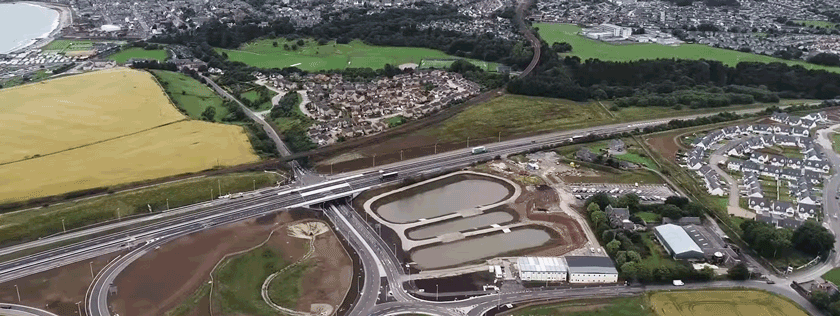Pros and cons of the Aberdeen Western Peripheral Route

The long-awaited Aberdeen Western Peripheral Route (AWPR) was finally opened in full on 19th February after 14 million working hours.
The 36-mile road provides a direct link between the south of Aberdeen at Stonehaven with the north at Tipperty.
Stewart Mackie, Chief Inspector of road policing in the north of Scotland, anticipated and predicted that the road would be the safest in the country and prevent more than 80 road traffic collisions per year.
Transport Scotland claimed the AWPR will provide a range of benefits to people and businesses across the north east, including:
- reducing congestion
- cutting journey times
- improving safety
- lowering pollution
In the first month of opening we want to consider the positives and negatives this new road has brought to the north east of Scotland.
Not only has the AWPR decreased congestion in the city centre, but it provides much needed safer routes between Aberdeenshire towns as well as an uninterrupted road between the north and south of Aberdeen.
According to Transport Scotland, feedback from businesses and the public has been overwhelmingly positive. Access to Aberdeenshire businesses has improved, welcoming in new customers and decreasing journey times for many workers.
Drivers have been able to experience parts of Aberdeenshire they may have avoided before due to lengthy journeys on narrow, country roads, bringing custom to many businesses. Brand new bus routes mean accessing Aberdeen Airport has never been quicker.
Journey times have easily been cut in half or more with the introduction of the AWPR.
Previously, travelling from Stonehaven to Dyce would have taken more than an hour across single track, winding country roads.
The AWPR cuts this time to around 30 minutes and involves a smoother and safer route along a dual carriageway. These time-saving routes can be seen across Aberdeenshire allowing drivers more time to get to their destination safer.
However, the reaction isn’t all positive.
Poor signage on the AWPR has been linked to a number of incidents including three separate lorries driving straight over the roundabout at the junction with the A956 Cleanhill.
Since these incidents, yellow rumble strip markings were installed on the approach to the roundabout in hope that this alerts drivers to the roundabout. But is it enough?
Additionally, despite pleas for motorists to decrease their speed until they become familiar with the new road layout, nearly a dozen have been clocked driving above the speed limit of 70mph.
This road is perfectly constructed to allow comfortable driving at this speed and with the massive cuts in journey times, this should encourage motorists not to exceed the speed limit - making the road safer for everyone.
There have also been a handful of accidents on the AWPR, mainly owing to users not taking enough care on unfamiliar ground.
On the whole though, the AWPR has been receiving very positive feedback and remains an excellent and wholly needed addition to the north east of Scotland.
It may be too early to tell if the road has improved general road safety, but motorists are encouraged and reminded to drive safe to avoid unnecessary accidents.
Digby Brown reminds motorists to keep safe on the AWPR:
- Make yourself familiar with the road before use. Videos on the Transport Scotland website provide an overview of all the junctions.
- Drive at a sensible speed and don’t exceed the limits.
- Be aware and keep focussed when approaching bends, junctions and roundabouts.
- Be considerate of all other road users
